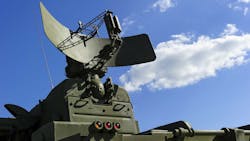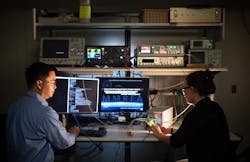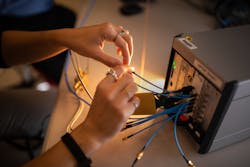Researchers at Sandia National Laboratory are developing digital radar technology, Multi-Mission Radio Frequency Architecture, that will replace legacy analog radars commonly used by the military. The lab is making this move because digital technology is finally at a point where the switch from analog to digital can be more easily made. The overhauled design promises U.S. warfighters more flexibility and performance during intelligence, surveillance, and reconnaissance missions, even against sophisticated adversaries.
Prototypes are currently being flight-tested and the technology could be ready in the next two years, according to press release from Sandia.
RELATED
U.S. Sends Four HiMARS to Assist Ukraine's Forces
Radar Defends on Land, in the Air and at Sea
Acoustic Component Shrinks Phase-array Radars
The new digital radar can be reconfigured for different functions such as communication, navigation, or electronic warfare, reducing the need for additional hardware. Soldiers and sailors will be able to download tools for each mission as firmware and software onto equipment about the size of a small toolbox.
The research team is using advanced electronic components developed for 5G cellphone systems to gain major advantages in performance and agility over similar technologies. 5G technology increases the amount of information wireless technologies can transmit and receive.
Sandia is using it to create digital processing tools that convert massive amounts of analog data to digital signals and vice-versa, such as a digital version of a synthetic aperture radar, a remote radio-frequency imaging method widely used national security missions. The new radar architecture and wireless communication can operate simultaneously on several radio-frequency channels to work together on a single function or work independently on several different functions.
“The use of commercially available electronics is driving down the cost of these sophisticated systems, providing a clear path of upgrades as the technology continues to advance,” says Steven Castillo, a recently retired Sandia senior manager who worked with the project. “The new architecture also sets the stage for using highly agile antennas that will be developed.
The new architecture will be harder for an adversary to jam or disrupt, according to Sandia. An adversary that knows it is being watched by a radar can use countermeasures to degrade the radar’s performance. But Sandia’s system lets military operators change characteristics of their transmitted signal in real-time, making it harder to recognize and jam. In addition, the new radar can be used to analyze complex radio-frequency environments filled with many kinds of signals, including those of an adversary.


